TLDR: This week some gaps in our omicron preparation opened up, the winners and losers in our covid ‘rekovery’ were revealed, investors saw glimpses of what the end of easy money could do to asset prices, and the Government chose to dig a longer Auckland rail tunnel that delays climate emissions reductions and costs $6b more than the original plan for a tram along Dominion Rd.
Peter Bale and I spoke about all of these developments and more in our weekly ‘hoon’ zoominar for paid subscribers, which is live for an hour on Fridays at 4pm. The recording is available above in podcast form for both paid and free subscribers to listen to.
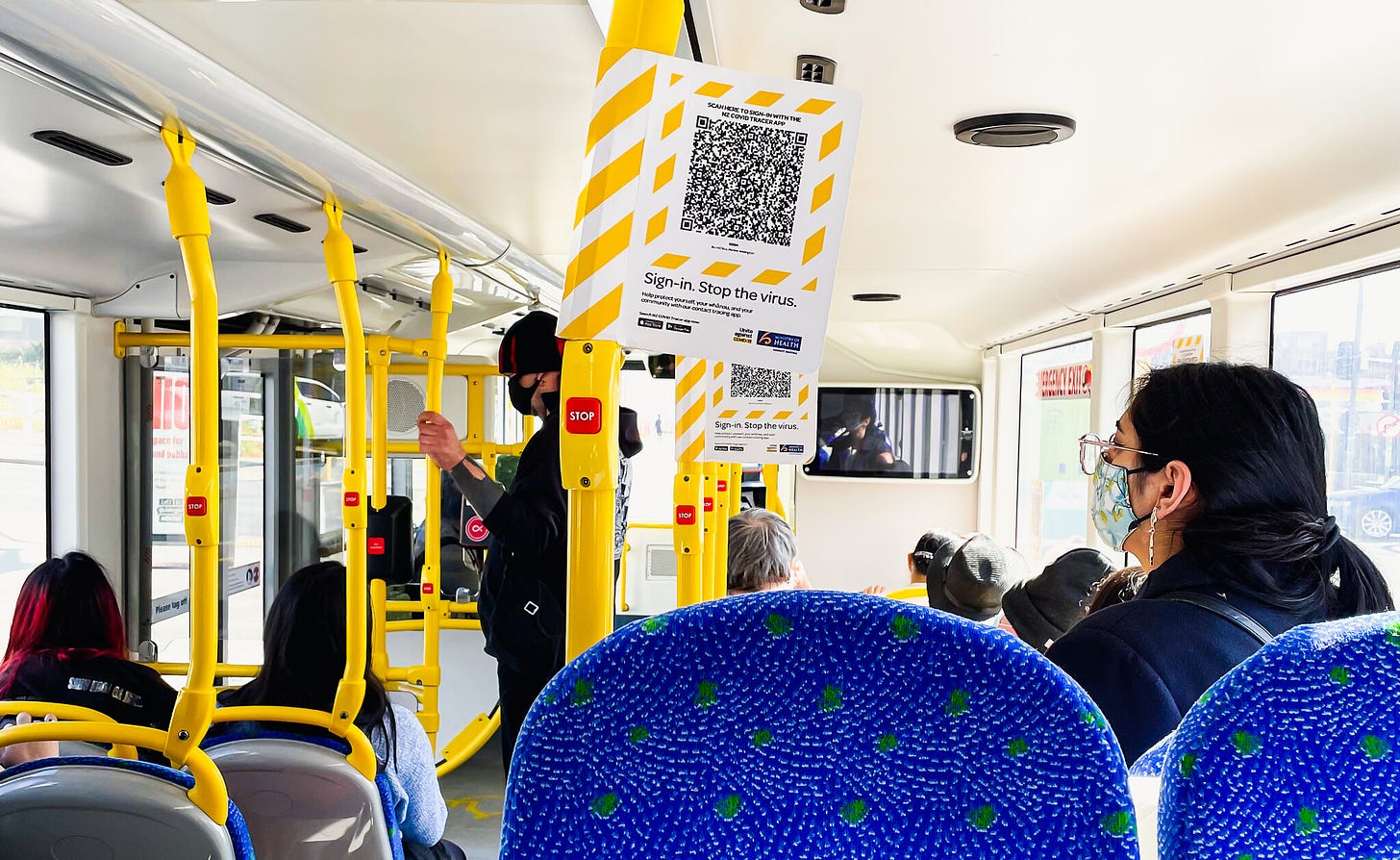
This is my one weekly summary sampler email for all subscribers, but I’d love you all to become full paid subscribers and join the community here fully. Paid subscribers get access to all my daily emails and podcasts, and are able to comment and join the webinars and ‘Ask Me Anything’ sessions on Fridays at midday. This community of paid subscribers supports my type of accountability, explanatory and solutions journalism on Aotearoa-NZ’s triple crises of housing unaffordability, child poverty and climate inaction.
Five things to note
1. Gaps opened up in our omicron strategy
Jacinda Ardern, Ashley Bloomfield and Ayesha Verrall gave a few more details this week about the Government’s plans to fight omicron, although plenty of questions were left unanswered and a big unannounced decision angered many. The outbreak is now at an inflection point and Bloomfield said it could reach a thousand cases within a fortnight. Other modellers see up to 50,000 to 80,000 omicron cases a day at the pandemic’s peak some time in late February or early March.
There were two set-piece news conferences in the Beehive Theatrette I attended this week. I asked questions about the border reopening and the availability of rapid antigen tests (RATs).
Firstly on Tuesday, Ardern had her first full post-Cabinet news conference of the year, announcing the bones of a new three phase strategy to be overlaid on the ‘red’ traffic light setting, which superceded the ‘levels’ system. Verrall announced more details on Wednesday in a sometimes testy news conference. It focused as much on Bloomfield’s decision to grab all incoming RAT orders for the Ministry, including those already ordered by private firms, as on the three phase system.
Private importers criticised Bloomfield’s unannounced decision last Sunday as as a ‘requisitioning’ or ‘commandeering’ of supplies they’d already ordered and in some cases paid for. Verrall rejected the accusation that orders had been taken, saying that private importers had no guarantees they would actually get them, given massive global demand, and the ministry’s intervention made early imports more likely. Bloomfield was accused inventing a new doublespeak when he described the move as ‘consolidating the tests into Government stock,’ rather than a requisitioning.
In the current first phase - the phase when there are up to 1,000 cases a day - positive cases have to self-isolate for up to 14 days and close contacts have to isolate for 10 days. Those with symptoms still need to go to a testing centre for a nasal swab PCR test. Labs have capacity for up to a baseline of 58,000 PCR tests a day, and surge capacity for up to 77,600 for up to seven days. But it’s expected the testing and tracing system will become overwhelmed as cases head towards thousands of cases a day.
In the second phase, when cases go over 1,000 a day, asymptomatic critical workers will be able to return to work if they test negative with a RAT, but the RATs will not be widely distributed. Verrall could only define critical workers as those doing work to ‘keep people alive’ and details of occupations and workplaces are still two weeks away. There are only 4.6m RAT kits in the country, with another 14.6m scheduled to arrive in the next five weeks. A further 22m are on order, but their deliveries aren’t confirmed. In phase two, the self-isolation period for cases will drop to 10 days and to seven days for contacts.
In the third phase, when there are many thousands of cases a day, only household and ‘household-like’ contacts will have to self isolate. All but the most serious cases will be expected to manage themselves at home. Both Verrall and Ardern pushed back at my questions about when all households would get access to RATs to use at home themselves. They said they preferred people went to testing centres or pharmacies to have trained testers use the limited stock available there.
The gaps opening up
In my view, the gaps in the Government’s strategy to fight omicron include:
A lack of RATs to start using and distributing them to everyone now because of a slow pivot from the elmination strategy employed before September’s capitulation towards a ‘living with it’ strategy, which is only now being contemplated, because it is being forced on us by omicron’s transmissability. It made sense not to use RATs during elimination, given they have false negative and false positive rates ranging from 20% to 70%. But when the PCR testing and tracing capacity is overwhelmed, using RATs will help avoid the health system being overwhelmed and help avoid the supply chain problems Australia and others have had because the sheer volume of essential workers who are isolating as cases or close contacts, unable to have any surety they can work without spreading Covid.
A lack of hospital capacity continues to limit the Government’s options for ‘living with Covid’, given it knows we can’t handle the outbreaks seen overseas. Australia has twice the regular hospital beds and staffed ICU beds per capita than Aotearoa-NZ, both because of 30 years of under-investment in infrastructure and staffing here, and because Australia has been able to call on a much larger private hospital system, which has been built up over decades through more available and subsidised private insurance. And remember, Australia’s much better resourced system is only barely coping right now.
An erosion of trust and cooperation between the Ministry of Health, the DHB’s Public Health Units and the private companies running supply chains and their own Covid testing systems is a growing issue. There’s been plenty of niggle over the last two years as the Ministry has sought to control the testing and tracing systems. Its slow adoption of saliva testing and its long-running rejection of private alternatives has frustrated many. This week’s ‘consolidation into Government supplies’ worsened those relations again concentrates the risks in the hands of one organisation, rather than having a diversity of responses. The ‘big Ministry’ approach worked in 2020 and up to September last year, but delta and omicron were finally too clever for the elimination strategy and now the Government needs to open up, both with its response and at the borders.
The key quotes:
The PM arguing why regular people won’t get RATs they can use themselves any time soon:
“It may well be that people are able to use them (RATs) at home, but we want to make sure that, when people are using them, it’s because there is good cause to use them: they’re a contact, someone in their household has Covid, they’re symptomatic; where they’re part of a surveillance regime because of their essential work, for instance.
“But just people testing in a widespread way for no reason actually is not something that I think we’d want to encourage, given false positives and false negatives. We don’t want someone staying at home when they don’t need to.” Jacinda Ardern
Ashley Bloomfield explaining how he made the decision to ‘consolidate’ private RATs orders into Government hands during a call last Sunday morning with Roche.
“We were discussing our forward orders, and trying to get as much certainty as possible about how much of those forward orders would be delivered and the timing of those between now and the end of February," Bloomfield said.
“During that conversation, I was asked about the orders that other New Zealand-based companies had and I was asked about whether we should prioritise the all-of-Government order. And I said yes – that should be the priority for now.” Ashley Bloomfield.
2. The winners and losers of the covid ‘rekovery’ revealed
This week I dived into Stats NZ’s national accounts data for the September quarter to try to work out who had benefited from the Government’s covid response policies over the last two years or so. Here’s the piece I put out on Wednesday via email to paid subscribers documenting how the Labour Government, supported by the Greens, presided over policies that accidentally on purpose engineered the biggest transfer of wealth to asset owners from current and future renters in the history of New Zealand.
I asked paid subscribers if I should open it up to the public and they encouraged me to, so it’s free for all to read and share.
I spoke with RNZ’s Kathryn Ryan about that report on Thursday morning here.
3. Inflation rose and the blame game started
Our headline annual CPI inflation rate rose to a 30-year high of 5.9% in the December quarter, thanks largely to higher fuel, food, housing rents and building materials costs. National blamed the Government’s spending, while Labour said the inflation was mostly imported and not the Government’s fault.
In my view, some of the inflation is imported, and the Government’s spending is only very partially to blame. One source of inflation here that hasn’t gotten as much attention as it should have, and has done overseas, is the ability of companies with dominant market positions to increase prices more than they could in a more competitive or controlled market.
We have duopolies and monopolies in building materials, supermarkets, fuel, electricity, insurance, banking, newspapers and electricity. Profit margins are higher in those sectors here than overseas, and have been the source of a good chunk of the inflation here. Obviously, the Commerce Commission has already investigated and re-regulated fuel. It’s now doing supermarkets and building materials is next up.
In my view, these market studies and re-regulations can’t come soon enough. I’ll be diving into this area more in the weeks ahead. I welcome suggestions for lines of inquiry from paid subscribers in the comments below.
4. Investors looked into the abyss of the end of easy money
Stock markets gyrated wildly this week, often falling sharply in the mornings and then bouncing back in late trade as ‘dip buyers’ jumped in with the confidence that the Fed would of course continue to ‘guarantee’ ever-rising asset prices.
Some are nervous the Fed’s pivot in November to signalling a tightening of monetary policy to control US inflation that jumped to 7.1% in December will lead to as many as seven rate hikes this year. For nearly 25 years, investors have taken for granted that the Fed and other central banks will come to their rescue whenever the chips are down with rate cuts and money printing. That was possible with ever-falling and often below-target inflation.
I still think the jury is still out on whether this era of surprisingly low inflation is over, but Covid has certainly changed the trajectory in the last 18 months, thanks to disrupted supply chains and worker shortages in countries where a chunk of the workforce has literally gotten sick or died, or hasn’t been able to work because of disrupted childcare and schooling arrangements. Much higher oil and prices because of supply problems in the middle east and Latin America have made it worse, along with the growing push to raise fossil fuel costs and use less coal for climate change reasons. The end of nuclear power stations in Germany and Japan are also factors.
Now the excuse of low inflation is gone away, central banks are withdrawing stimulus and threatening to put up interest rates. Jeremy Grantham’s widely read piece on the likely bursting of a fourth ‘super-bubble’ (which I referred to in last weekend’s summary) at a potential cost of US$35t has unnerved a few people. I wrote in more depth in Tuesday’s email about why some are nervous about the end of the Greenspan/Bernanke/Powell put. I wrote about why I don’t think the era of bailouts is over, and how it all might end. Or not.
5. Government chooses higher carbon emissions by 2030
The Government announced on Friday it had chosen the Tunnelled Rail option (purple line below) for the Auckland CBD to Airport mass transport project, rather than the option of either a tram along Dominion Rd (apricot line below) or a collection of over ground and underground rails lines alongside Sandringham Rd (teal line below). Surprisingly, it also announced it would bring forward a decision on a second harbour crossing via tunnel from Takapuna to Wynyard, probably just with a rail line.
If delivered on time and budget, the tunnelled CBD-to-airport route would mean Auckland generated 400,000 tonnes more in carbon by 2031 than doing nothing, because so much carbon is emitted to make and install the concrete and steel and drill the tunnel in the 10 years before it is completed in 2032.
The wider problem is Aotearoa-NZ and Auckland need to more than halve transport emissions from cars and trucks before 2030, which is when scientists say we need to have stopped growing emissions and be reducing them sharply to avoid the planet warming more than 1.5 degrees — beyond which the risk of feedback loops and tipping points causing an uncontrollable and catastrophic rise in temperatures becomes a much bigger risk.
Compared to the original Dominion Rd tram option, the Tunnelled Rail will go underground all the way from Wynyard Quarter to Mt Roskill, before coming out above ground and going alongside the motorway to the airport. The indicative business cases for the three options released in October last year show the Tunnelled Rail option was forecast to:
cost ($14.6b) almost twice as much as the Dominion Rd tram ($9b);
have four fewer stations, but take 14 minutes less to get from the CBD to the airport;
affect 322 fewer properties because it does not go along Dominion Rd;
be carbon neutral 10 years later than the Dominion Rd tram and generate 300,000 more tonnes of carbon than the tram option by 2031; and,
generate 400,000 tonnes more carbon than the ‘do nothing’ option by 2031.
In my view, it’s too late to be building rail now. We have to get most people out of cars and utes and onto footpaths, cyclepaths and into buses if we are to reduce emissions substantially before 2030. Sadly, it’s too late for the railways.
The latest plan without funding signed off, an end date or bipartisan support
Sir Dove Myer Robinson’s 1972 rail plan was scuttled by the third Labour Government in 1975
Key quotes:
Transport Minister Michael Wood on the failure to adopt the 1972 plan above:
“The city suffered because of that failure.” Michael Wood (Stuff).
National ridiculed the latest proposal and said the money should be used instead to build two new motorways.
“If it ever goes ahead it will be at least $15 billion of wasted spending. The number one priority for Aucklanders is a second Harbour Crossing for both public transport and private vehicles.” National’s Transport spokesman Simeon Brown (Stuff)
Unfunded, uncertain, carbon intensive and divisive
In my view, a lot of voters and infrastructure planners will take all of this with a double-cab ute full of salt. There will be a change of Government, probably before funding is signed off and construction has started. Without a bipartisan approach, it seems unlikely to ever happen, particularly given National’s self-promotion as the party that doesn’t ‘hate cars’ and the huge sums involved, which Treasury (and both main parties) insist can’t be funded through a longer term increase in core crown net debt.
The funding will have to come from value capture rates (which land owners loathe because it deprives them of some of the unearned and untaxed private capital gains from land values rising around publicly funded infrastructure and its new zoning), local rates surcharges (which locals hate), congestion taxes (which locals hate). The alternative is a purely Crown debt-funded project, which the rest of the country doesn’t want and the current interpretation of the Public Finance Act won’t allow because it would push net debt outside the 20-30% range that Treasury deems prudent.
National has already begun attacking the project as wasteful, disruptive and ‘anti-car’, while warning of the ‘tax increases’ implied through the funding vehicles mentioned. These projects are at the heart of New Zealand’s ‘culture wars’ that pit Team Mike Hosking and his Ferrari against Team Julie-Anne Genter and her electric bike. Meanwhile, the top selling vehicle by a country mile last year was the diesel-powered Ford Ranger (12,580 sales), which weighs in at two tonnes and generates 20 times more carbon emissions per kilometre as a petrol-electric hybrid hatchback.
My current assumption is that this CBD-to-airport rail line and the under-harbour rail tunnel to Takapuna will not happen in my lifetime, and I hope I have a good 50 years left in me… If I’m wrong, I hope it’s because it’s built before the end of a long life, rather than because I’m not around in the mid-2030s when they are proposed to be finished. Friday’s announcement hasn’t changed my view, or lifespan.
I also think it shouldn’t happen because of the extra carbon emissions over the next 10 years, particularly in comparison to the counter-factual of a fast move away from cars and utes to walking, cycling, scootering, and bus usage. Although I also think that is unlikely with the current mix of public opinion, parties, and their policies. Long story short? Nothing much will change any time soon. This may seem unrealistically pessimistic, but I would refer you to Sir Dove Myer Robinson’s proposed rail map above from 50 years ago.
The politics of magical thinking
While a generation of voters and politicians remain of the view they can have it all: big infrastructure projects and low taxes, at the same time as low public debt that keeps interest rates low to support high house prices. Politicians who won’t be responsible for the planet’s temperatures in 2050, or the likely carbon (and other) liabilities, are currently able to persist with this magical thinking that appeals to voters, sometimes because they believe it, and sometimes because they can’t see a way to change it.
Humans in democracies often make long term decisions with short term thinking dominated by political tactics that:
emphasise the benefits of the status quo;
highlight the risks in the unknown future;
emphasise the pain and disruption of change; and,
focus on the immediate financial losses caused by bearing investment costs now in exchange for future benefits that other groups and generations will receive.
The kids being born when Sir Dove Myer Robinson was Auckland’s Mayor are the least likely now to vote for these railways that won’t run fully for another 30 years, even though they personally would have benefited from an Auckland Rail network like the one in the faded map above. Unless, of course, they own property along the proposed route and around the 18 proposed stations, and even then, their votes will be conditional on no value capture rates or local rates surcharges that dilutes their untaxed and leveraged capital gains, and no new national taxes or higher public debt that endangers current land values.
I realise that’s a tad cynical, but after 50 years of political choices taken and the current political landscape, I can’t see any other outcome. Happy to be wrong.
A fun thing
Ka kite ano
Have a great long weekend if you’re an Aucklander, although I’ll be publishing on Monday because I’m in Wellington providing a national service. Just like the Monday just gone, when I published because it was a Wellington holiday and I provide a national service… :)





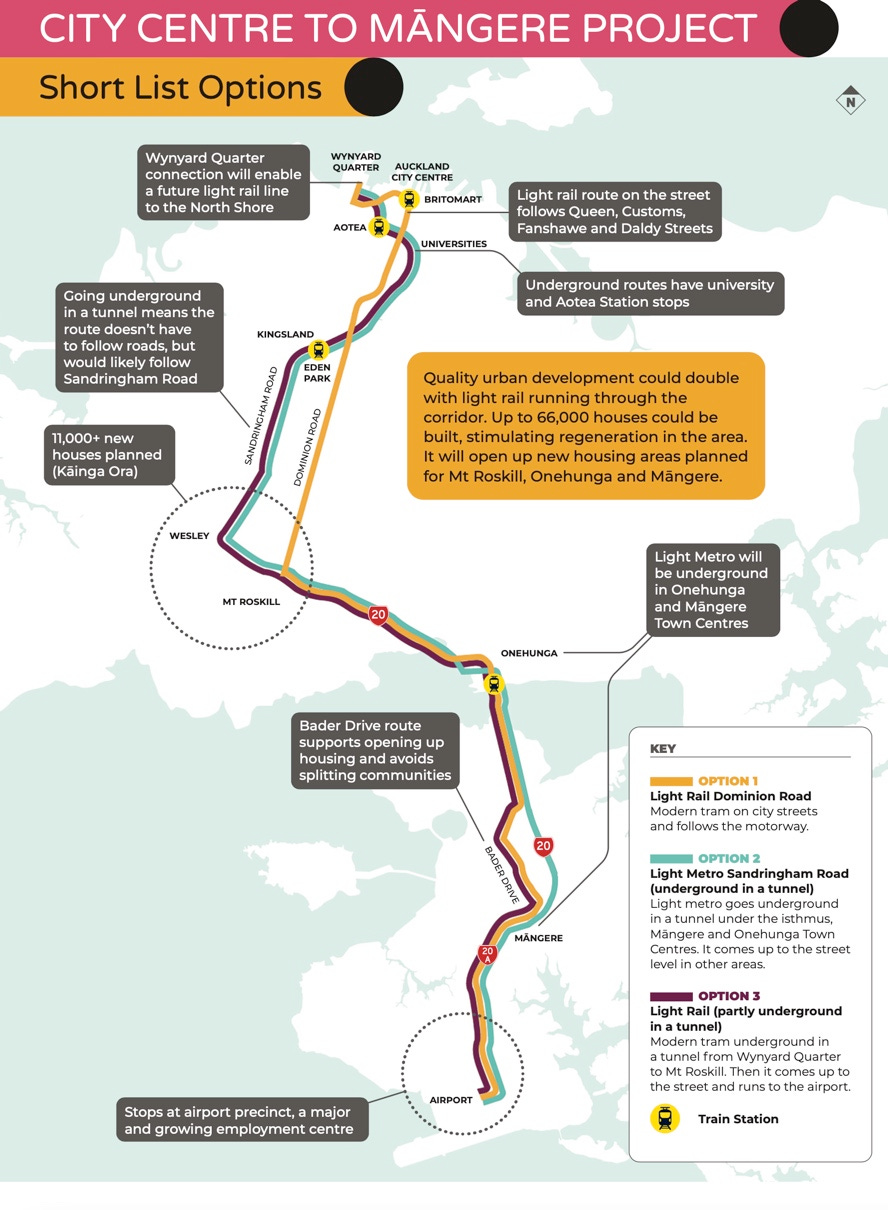
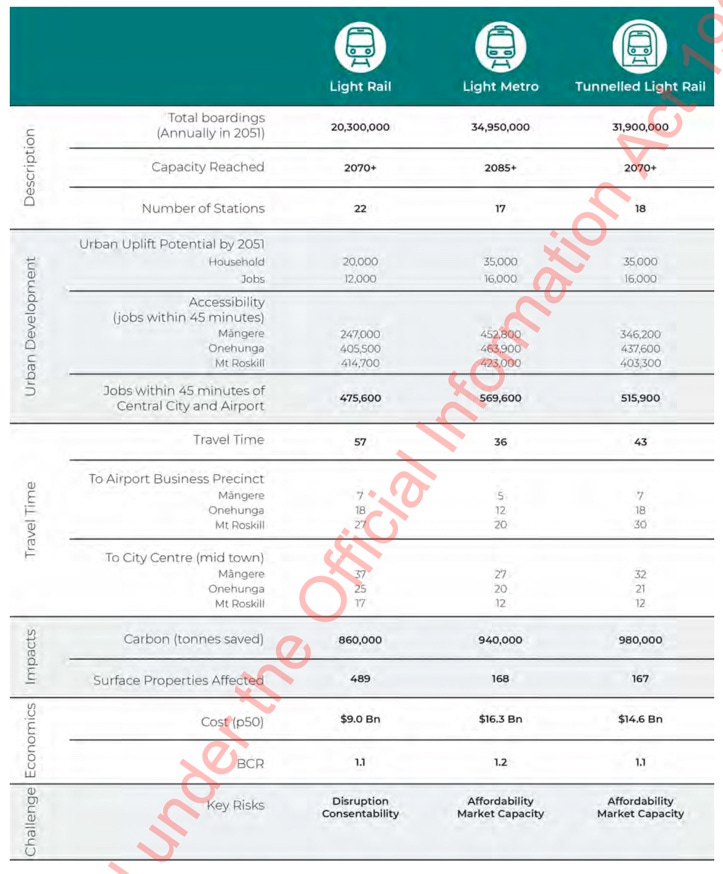
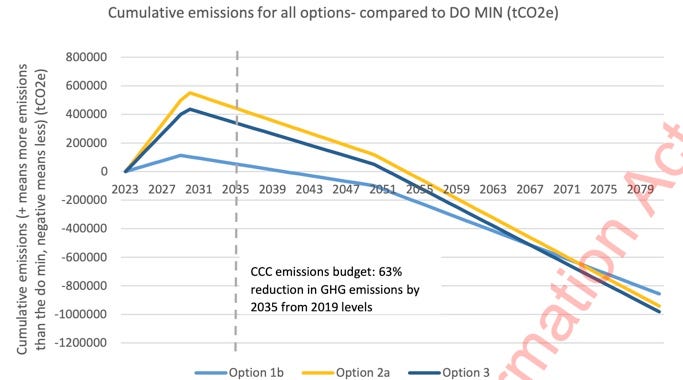

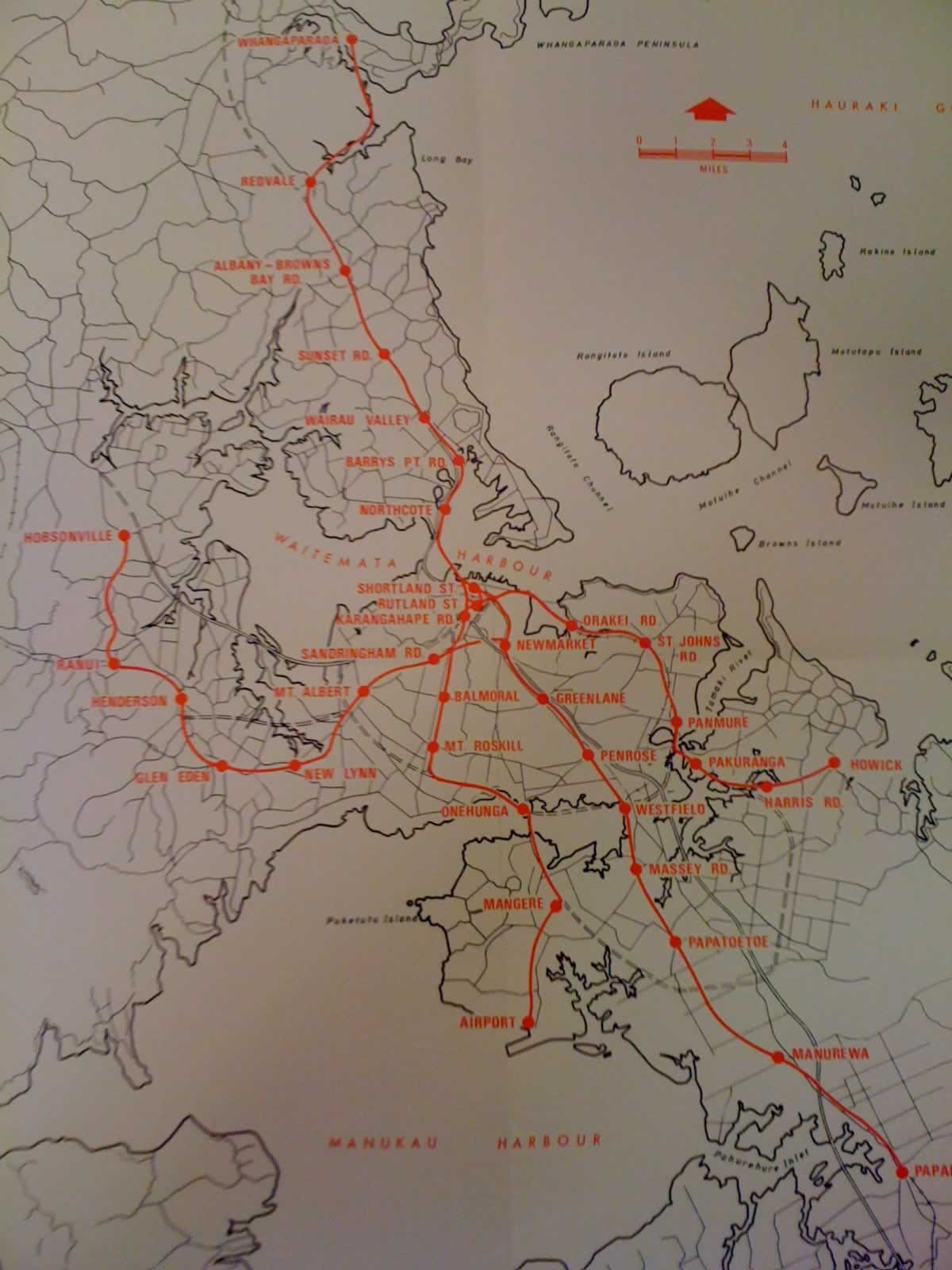


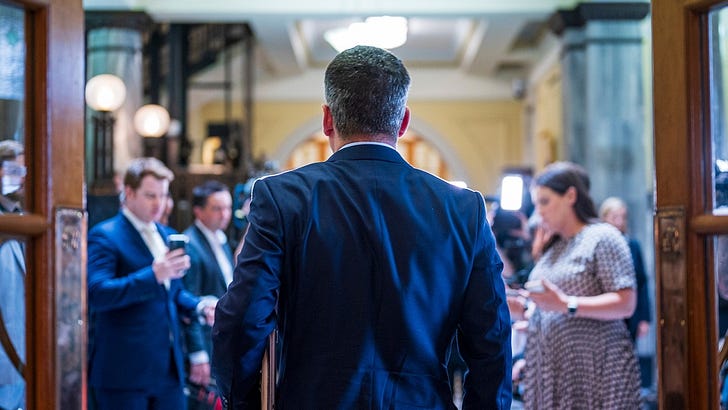
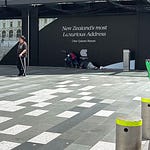
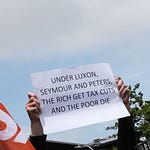
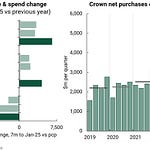
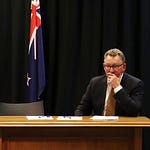



Share this post